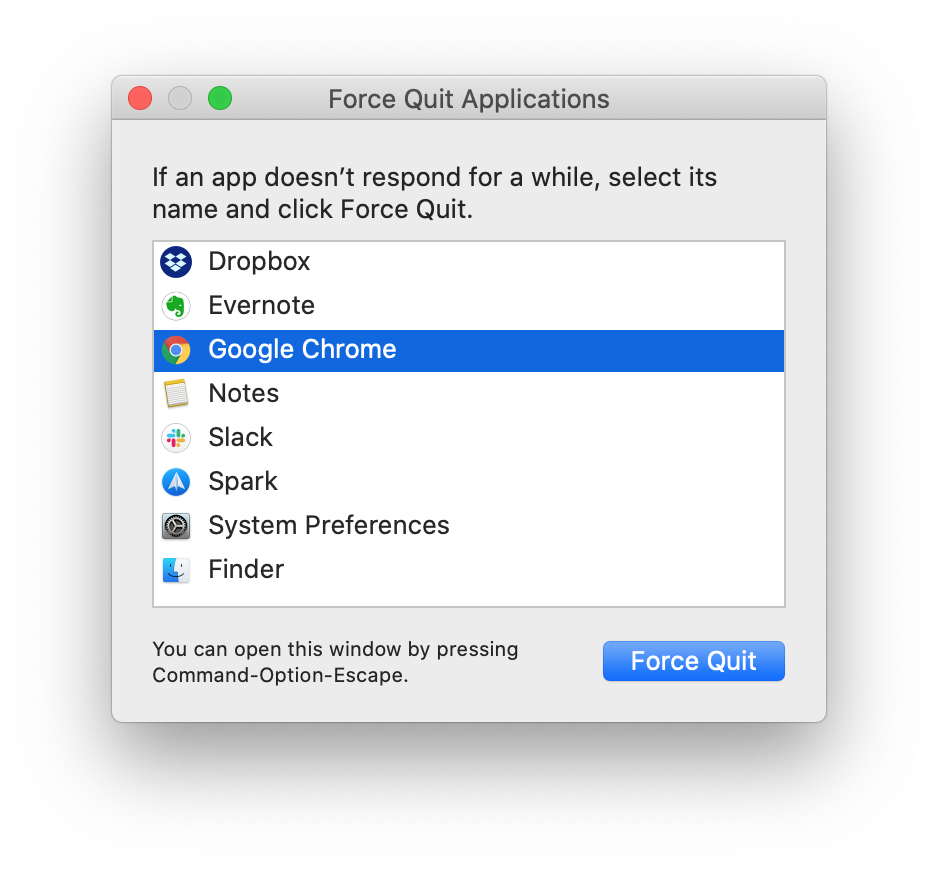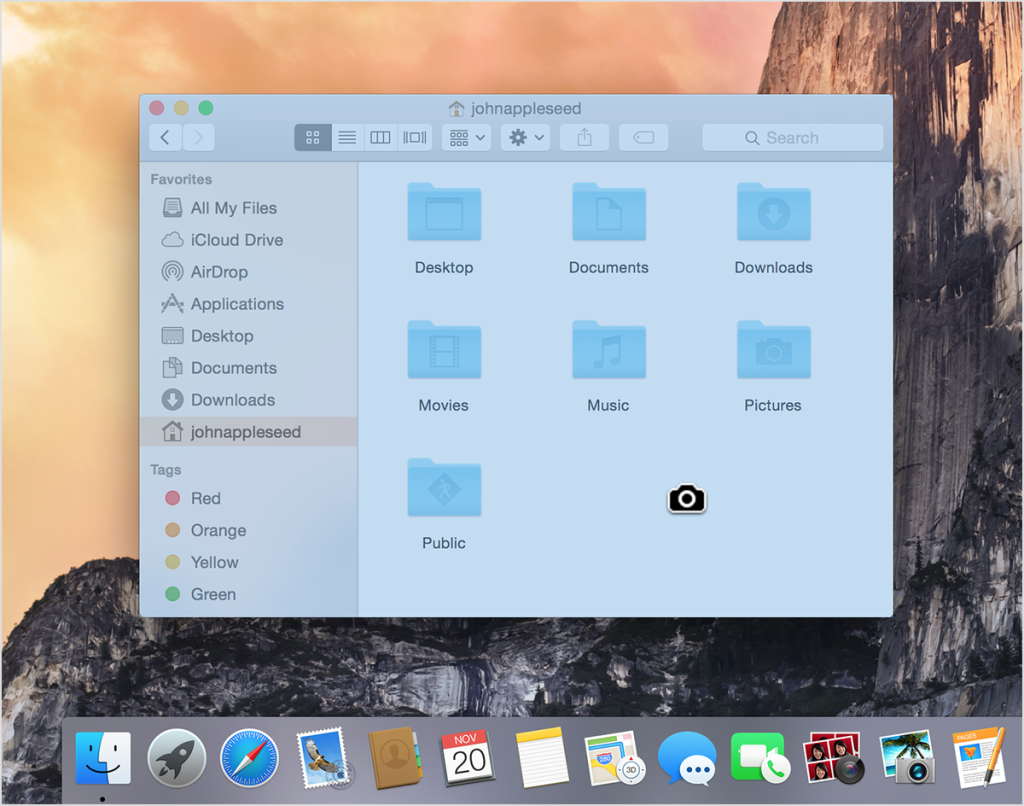- What App Foce Closes On Macbook Pro
- Force App Close On Macbook
- What App Foce Closes On Mac 10
- What App Foce Closes On Macbook
- Force App Close On Mac
- What App Foce Closes On Mac Computer
For Macbook Pro Type C accessories : First Take Advantage of 50% Off discount on Indiegogo here!
Usually, open a app you will open a window on your MacBook. Some programs even let you open new windows on the fly; the following illustrates a window in its purest form: a new Finder window. To display this window on your own MacBook, choose File→New Finder Window or press Command+N. From here, you can reach any file on your MacBook or even venture to the Internet.

Mar 16, 2010 On Windows machines, when you close the window, you close the app. But on a Mac, when you close the window, that’s all you do: just close the window. The app itself it still running. Tap and slide up finger on bottom horizontal app line, Until you see apps card App Switcher, Again tap and hold on the app until you see a red minus button on each app. New Swipe up running app to force close it. Explore more: Force Close app on iPhone – Alternate ways. Kill or Force Quite an App on iPhone using AssistiveTouch.
When you’re finished with a document or you no longer need a window open, you can close it to free that space on your Desktop. To close a window in Mac OS X, move your pointer over the Close button; it’s the red circular button at the top-left corner of the window. An X appears on the button when you’re in the zone. When the X appears, just tap the trackpad.
Sometimes we need to do something else in a hurry. We want to close all of the apps for a few seconds. If your computer have been used many years, you may encounter the app can not be closed very smoothly! So there are some ways to force closing your computer.
OS X has his own special window to handling apps that need to be force quit. You can access this window two ways, first, by clicking the Apple logo in the Menu Bar and selecting Force Quit. Or, you can bring up this same window by using the keyboard shortcut Command-Option-Escape. The window will display all running applications, and identify with red text any apps that are “not responding.” Just highlight an app and click the Force Quit button to quit it. As mentioned above, there’s no warning when you force quit an app, so be careful as you make your selection.
There is another way, you can directly force quit apps via a keyboard shortcut, without any other steps. This may be the best and most obvious method. But using the keyboard shortcut below will immediately force quit the active, or foremost, application. The problem is that it’s very easy to lose track of which app is active, especially when dealing one or more frozen or unresponsive apps. Therefore, this method is the most risky from a data loss perspective, as it’s far more likely that a user will make a mistake and inadvertently force quit the wrong app.
But, as long as you understand this risk and are careful, this force quit shortcut is the fastest method. To use it, make sure the frozen app is active and press and hold Command-Option-Shift-Escape (you’ll notice that this is simply the Force Quit Window shortcut with the Shift key modifier thrown in). As with other force quit methods, the active application will immediately be force quit.
Sometimes hardware issues or major OS X bugs cause so much instability that the only way to get your Mac up and running again is to reboot. Absent those relatively rare circumstances, however, you should be easily able to control any frozen or misbehaving apps by force quitting them via one of the methods above. Just be sure to save your work when possible, and double-check your steps to avoid quitting the wrong app.
All of us know, Forcing closes apps which is bad for our Macbook. If we have enough time to close our computer. Please close it one by one!
I always get the same chill whenever I see an app or program stop working, especially if it’s something I’m using for work. Apps force close all the time, and each time is more frustrating and inconvenient than the last. It comes seemingly out of nowhere, but thankfully there are two things you can do to stop it from happening.

It’s usually down to the app itself, or the amount of RAM left on your Android. Whatever the reason behind it, your apps will be back up and running in no time soon, this time without closing on you.
What App Foce Closes On Macbook Pro
Option 1: Free up Some RAM
Force App Close On Macbook
Your RAM basically amounts to how much your Android can handle at one time. If something takes more RAM than you have, you can’t run it. If an app starts to take up more RAM than your Android has on hand, it’ll forcefully close, which gives you the problem you have now.
Since you can’t add more RAM to your device, the next best thing you can do is make sure you have enough RAM free.
Look at Available RAM
Let’s see how much RAM you’re working with first. Head to your Storage Settings, and then look at Apps, before going to your Running apps list. Here’s where you see how much RAM you have free, how much is used up by apps, and how much is used up by your Android on its own.
The device I’m using now doesn’t have a whole lot of RAM to its name, but all that means is I just need to manage how many processes I have running at once.
Stop Processes and Close Apps
Even though your Android systems take up a lot of RAM, you can’t end those, so you’ll need to lose something else if you’re having RAM problems. This is usually the point where it’s recommended you use a task killer, but it’s better to avoid using those if you can. Instead, if you have any of the apps on this list open, close them and wait for a few minutes.
The process will still be cached for a few apps, but you’ll at least have more RAM than you did before. If you still don’t have enough RAM, click on one of the apps you have in the Running menu.
On this page tap to Stop the process to free up the RAM. If this is an essential service, closing it will just bring it back up in a few seconds.
Using Task Killers
If you absolutely must use a task or app killer, use one of these, but make sure you use it very sparingly. Killing apps and tasks left and right will damage your Android’s processing ability in the long run.
Option 2: Uninstall and Reinstall the App
If RAM isn’t the problem, then it’s either the app itself that’s causing the problem or another app on your Android isn’t playing nicely with it. Before we get into other apps, let’s look at the app that’s force closing first.
Uninstall the App
This is the easiest part of the process. Open your Storage settings, find the app, and then uninstall it.
Reinstall and Open the App
After you’ve uninstalled the app, open the Play Store again, or wherever you downloaded the app to install it one more time. If you’re in the Play Store, open up the second under your profile with your apps and games to see a list of everything currently or once installed.
Pick the app from the list, or search for it again if you can’t find it. Once you’ve done that, open it up and run some tests to see if it force closes again. If it still does, another app on your Android could be causing the problem.
Checking Open Apps and Processes
For a moment, go back to where you see your current RAM usage. If there’s another app causing a problem for you, it’s on this list somewhere. If the force closing is a recent problem, an app that you installed recently is the troublemaker.
Go down the list one by one, and uninstall apps that you’ve installed as you’ve started having the problem until the force closing stops.
What App Foce Closes On Mac 10
Option 3: Basic Troubleshooting

If you’re still experiencing force close issue, then something deeper than just a problem app is giving you headaches. Set aside at least ten minutes and follow our guide to basic Android troubleshooting. Once you get to the end of the guide, your force closing problem and any others will be fixed.
What App Foce Closes On Macbook
Conclusion
Force App Close On Mac
Apps force closing is an annoying issue, but 99% of the time it has an easy fix. Freeing up more RAM doesn’t take long, and once you know you have RAM problems, you can manage it more effectively and stop this from happening in the future.
What App Foce Closes On Mac Computer
If you’re still having issues, or need any more help with force closing apps, please leave a comment below!